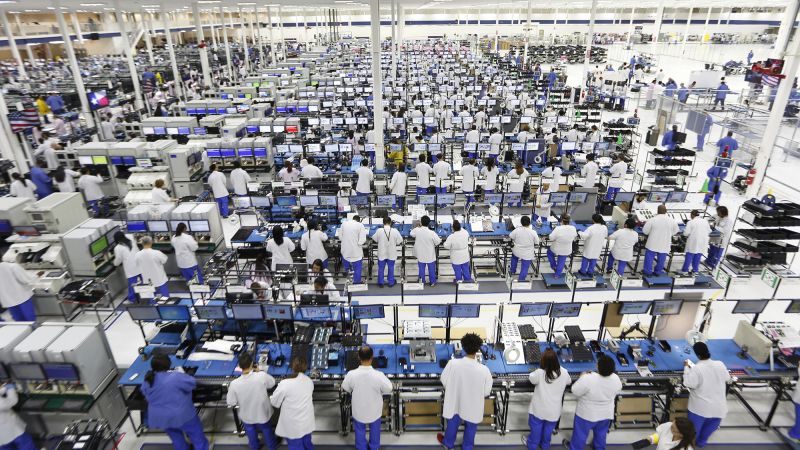In 2013, Motorola attempted to capture a greater share of the smartphone market with the launch of its Moto X, produced in Fort Worth, Texas. This move aimed to appeal to consumers interested in domestically manufactured products. Yet, the effort was short-lived; by May 2014, the company had closed the factory and ceased domestic assembly. Dennis Woodside, former CEO of Motorola and current CEO of Freshworks, reflects on this experience as companies today consider similar ventures.
Woodside explained that while there was a segment of consumers who preferred products made in the United States, the challenges of local assembly proved daunting. The closure of the Texas factory highlighted a broader issue: the majority of tech products, including smartphones, are typically assembled in Asia and South America. This trend is driven not only by lower labor costs but also by the absence of a skilled workforce capable of filling factory jobs in the U.S.
The relevance of Woodside’s experience has resurfaced as the current administration pushes for companies like Apple and Samsung to shift production to the United States. Increased tariffs on imports from China, effective from August 12, 2023, have added pressure on these companies to reconsider their manufacturing strategies.
Challenges of Domestic Smartphone Production
Motorola’s decision to assemble the Moto X in Texas was rooted in the desire to offer consumers customization options unavailable in competing products like the iPhone and Samsung Galaxy. Through its website, customers could personalize features such as button colors and back panels. Woodside noted that this required manufacturing closer to the consumer.
Despite assembling the Moto X in the U.S., key components such as the battery and motherboard were sourced from Asian suppliers. Sales figures, however, fell short of expectations, with only 500,000 units sold in the third quarter of 2013, according to Strategy Analytics. By mid-2014, Motorola announced plans to shift assembly operations abroad due to high production costs and a fragmented supply chain.
Woodside remarked, “There definitely were higher costs, which was challenging.” He emphasized that the goal was to manufacture millions of phones annually, a scale that proved difficult to achieve domestically.
Workforce Shortages and Skills Gap
One of the most significant hurdles faced by Woodside was the challenge of hiring and retaining skilled workers. Many potential employees were drawn to other job sectors, such as retail and food service, making it difficult to maintain a stable workforce. Training staff for the specific demands of smartphone assembly added another layer of complexity.
“There’s probably several hundred parts, and they’re tiny,” Woodside said, likening the assembly process to working with a “super tiny Lego set.” He noted that many potential workers were not accustomed to such intricate tasks, necessitating extensive training.
The U.S. manufacturing sector is currently experiencing a skills shortage that complicates the effort to onshore production. According to the U.S. Bureau of Labor Statistics, the manufacturing sector lost approximately 11,000 jobs between June and July 2023. This follows a loss of around 15,000 jobs the previous month, underscoring ongoing challenges in the sector.
Additionally, a survey conducted by the Cato Institute in August 2024 revealed that many Americans do not view factory jobs as preferable to their current positions. The National Association of Manufacturers also reported workforce attraction and retention as a top challenge for U.S. manufacturers.
In contrast, countries like China continue to thrive in the manufacturing sector, employing around 123 million people in manufacturing roles, according to the country’s fifth economic census. Apple has historically relied on Chinese manufacturers like Foxconn, known for their high-volume assembly capabilities.
Woodside cautions companies considering domestic smartphone production to carefully evaluate their ability to source the necessary skilled workforce. He emphasized the importance of understanding the specific skills required for the products being manufactured: “Are we going to have to completely train the workforce to understand this specific product? That’s something we didn’t quite anticipate.”
As the landscape of U.S. manufacturing evolves, the challenges encountered by Motorola over a decade ago remain relevant today. The interplay between tariffs, workforce capabilities, and global supply chains continues to shape the future of smartphone production in the United States.
